As you've probably noticed if you've read my blog for any length of time, I'm a big fan of Pilot pens. Over a third of the pens in my personal collection are Pilots, and I know I can always rely on Pilot's consistent attention to quality, the pens' tasteful elegance, and incredibly smooth nibs that are a true joy to write with. Pilot's designs are pretty conservative, but they are innovative, too, and never boring. From the cute introductory Kakuno with its friendly smiley face nib, to the graceful pocket-sized E95s, to the unusual adjustable-nibbed Justus 95s and flexible-nibbed Falcon, not to mention the vast array of cool nibs (16 different ones!) available between the amazing Custom Heritage 912, Custom 743, and Custom 823, plus its stunning urushi works of art, Pilot offers a collection with a wider variety of writing options than any other brand, and I love exploring them all. Weirdly enough, however, I have never really gotten to know Pilot's most famous and successful pen: the Vanishing Point. Until now, that is!
[This article was first published on June 20, 2024, and amended on October 27th, 2024 with updated information about the Vanishing Point LE series, a few minor corrections, and an additional section about the beautiful Vanishing Point Raden collection, which we are newly carrying at Pen Boutique.]
Making History
Although it feels like a very modern design, Pilot's capless fountain pen made its debut over 60 years ago, in 1963, and was billed as the world's first retractable fountain pen. It remains one of the very few retractable fountain pens on the market, and is widely considered to be the best. The Vanishing Point (or Capless, as it is called in Japan) looks more like a ballpoint than a traditional fountain pen, and provides a ballpoint's quick-operating convenience. There is no cap to remove (or lose!), so you can start immediately writing with a click of the push button at the back of the pen. The design has evolved over the years, as Pilot continues to innovate. The first version of the Capless featured a rotating dial, which Pilot updated the following year to a click mechanism that could be operated with one hand, then added various improvements to the pen's durability and affordability. The modern version of the Capless/Vanishing Point with a metal barrel, high-quality finish, and 18k gold nib was released in 1998, and other Vanishing Point variations followed over time. The slimmer and lighter Décimo (so-named because it's the 10th model in the capless family) came out in 2005, the twist knob-operated Fermo (currently Japan-only) inspired by the original model followed in 2006, and the LS ("luxurious and silent") click and twist model joined in 2020.
To celebrate the Capless' 60th birthday in 2023, Pilot released their 60th Anniversary numbered Limited Edition Capless pen, a milestone piece in a worldwide annual tradition started in 2006. As with each limited Capless edition since that year, the number of pens manufactured worldwide matched the year of release, so it was an edition of only 2,023 pens, numbered on the band. We got about 700 of them here in the US.

The very special vivid crimson 60th Anniversary model is named Kanreki, the Japanese word for 60th birthday. The 60th birthday is especially significant in Japanese culture, as it is the year when a person completes one full cycle of the zodiac calendar, returning to the zodiac sign of their birth year. It's revered as a milestone in life, and the person turning 60 traditionally wears red, which is believed to ward off evil spirits. Pilot's Capless 60th Anniversary booklet describes the 60th birthday as a time for a person to "celebrate their long life thus far and the new start ahead of them." I love this idea!

The vivid crimson color with a high-gloss metallic lacquer finish and matte black accents was chosen for the "continuing success of both the pen's owner and the Capless series." What a perfect 60th birthday or 60th anniversary gift, or special pen to mark any significant year. The rich finish on Kanreki is stunning, and the matte black trim contrasts beautifully with the shiny red and gives it an elegant and cool look. We only have a few 60th Anniversary pens left, so if you love this beautiful pen as much as I do, make sure to order yours before they are all gone.

The limited edition Kanreki comes in a sleek magnetic presentation box with a beautiful booklet detailing the history of the pen, diagrams showing how it works, and photos of the pen's legacy, including eleven versions from 1963-2019 and the limited edition models released thus far.
Jaclynn Burleigh and Pilot's creative services team also put together the image below for me, showing the history of the Limited Edition Vanishing Point over the past twenty years. Thank you so much! The 2004 and 2005 pieces were released in the US only, and were not numbered, so 2006 was the first year of the unbroken series as we know it today. There has been an incredible amount of variety in this collection, and who knows what the future will bring!

Vanishing Point Basics
How does a Vanishing Point work, anyway? Why doesn't it leak or dry out? Is it actually comfortable to use a fountain pen with such an unusual shape, with no distinct grip section and the clip located on the writing end of the pen? These are some of the questions I wondered before I started writing this article. Sure, I'd tried Vanishing Point pens in the store when customers asked to dip test them, but I don't own one myself, and they are definitely a little strange and intimidating!
I had the pleasure of meeting with our Pilot rep, Bill Pearcy, for a private Vanishing Point tutorial, and we talked a lot about the pens and my many questions. Bill brought a pen case filled with twelve different Vanishing Points, representing a range of all the different models and nib sizes, plus a special cutaway version of the pen to show me. I also selected a pen in every category to bring home from our store, photograph, and explore further.

[Bill's pens: standard Vanishing Points in Matte Blue, Blue, and Blue Carbonesque; Décimos in Light Blue, Purple, and Burgundy; Vanishing Point Stripes and Vanishing Point SE in Fiery Orange Marble; Vanishing Point LS in Burgundy, Blue, Black, and Matte Black.]
The lighting in our meeting space wasn't the greatest for photos, but here are the pens Bill brought. We arranged them into categories: standard Vanishing Points, Décimos, Vanishing Point Stripes, Vanishing Point SE (which comes in five beautiful marbled colors), and Vanishing Point LS. Bill had all four colors of the LS model with him! I'll describe the differences between the models, and detail all the potential color and trim options, in the next part of my article. For now, let's focus on what all the Vanishing Point pens have in common.
Every Vanishing Point pen's clip is on its writing end, but there are a few variations in clip shape between the different models. Décimo, the slimmest model, has a predominantly straight clip with very subtle curved indentations in the area where it transitions from its attachment at the metal tip of the pen. The standard Vanishing Point and Fermo have a more pronounced curvy shape, and, when you hold the pen, the clever design becomes clear. If you use a traditional tripod grip, the narrower part of the clip falls in the curved space between your thumb and finger.

The larger and more luxurious LS model has a very straight, narrower clip. The pen's slightly thicker body, combined with the thinner clip, also keeps my fingers from touching the clip when I hold it in my natural writing position. Each clip design is attractive in its own way, and I like how the different clips contribute to giving each model its own comfort and personality.
The way you hold your pen is very personal, so I can't tell you whether you will find Vanishing Point pens comfortable. If you have a nonstandard grip, the clip may bother you, but, for most people, the clip helps you align the pen in the right position and you don't even feel it. I was surprised how quickly it "disappears" when I pick up the pen.
I also find it extremely natural, quick, and comfortable to click the pen "on and off" and move it into writing position, all with one hand. Once you start using the Vanishing Point, it becomes second nature. Not only that, but the pens are very satisfying to click! I've had more than one customer comment about what a great click the Vanishing Point has, and how that is actually one of the selling points for them. One customer (hi, Logan!) actually impishly said he thought Pilot should come out with a Vanishing Point with an extra loud click, to torment your co-workers with at meetings. Ha! That's a little cruel, but I agree it's a great sounding click and is extremely enjoyable to operate. It can be tempting to click your Vanishing Point over and over just for the sheer pleasure of it. I wouldn't recommend this, but I can see how it could be irresistible!
All Vanishing Point fountain pens, from the yearly Limited Edition models and hand lacquered urushi finish Maki-e Raden designs, to the slim Décimo and everything in between, use the same 18k gold nibs and CON-40 converter, which come installed together as a unit in the pens, and can also be purchased separately. There are silver-colored rhodium plated and black ionized versions of the nib, as well as the traditional yellow gold, but they are all the same underneath and write identically. The 18k gold nib is smoother than the 14k gold nibs found on the majority of gold-nibbed fountain pens, as the softer gold conforms to your writing style more quickly.
The Vanishing Point's nib unit is available in extra-fine, fine, medium, broad, and stub. Some of the models only come with fine or medium choices out of the box, but we can swap them to a different nib size if you wish. Please call customer service to place your order over the phone if you would like to request a nib switch.
If you prefer to use a cartridge, the converter easily detaches and you can insert any Pilot or Iroshizuku cartridge in its place. Vanishing Point pens come with a metal cartridge cap, which you will find in the box, usually underneath the tray. You are supposed to slide the cartridge cap over your cartridge so that the pen's plunger presses on metal rather than plastic when you click the pen. This ensures that there is no chance of the plastic cartridge being punctured. I love this thoughtful detail! Your pen box will also include a Use and Care Guide and an ink cartridge to get you started.

Below is a photo of how the cartridge cap looks when installed. It doesn't have to face any particular direction. The two tiny ridges you may notice on your cap are just there to ensure that the cap fits tightly against the opening of the nib section, to hold it in place securely.
To fill your pen, unscrew it and take the nib unit out, then reassemble it once the full converter or cartridge is in place. Make sure your pen doesn't have the nib extended when you disassemble it, or it will be harder to put it back together. Instead, first "unclick" the pen to retract the nib, then unscrew it where the rings come together in the center, fill it, and then replace the nib unit with the nib and clip both facing up. The nib section will be guided into place by the alignment of a notch in the threaded section and a corresponding protrusion on the nib section. You can see them in the photo below. When it is properly in place, the nib should move forward freely. Don't worry, it's quite easy to disassemble and reassemble, so it's nothing to be afraid of!
Even though the nib is extremely skinny and cute, it's a great writer! I got to try all the different nib sizes while experimenting with Bill, but I'll share my writing samples later in this article.
The Trap Door
The click activation, clip position, and special narrow nib are all key Vanishing Point features, but, for me, the most fascinating part of the Vanishing Point is the special trap door that seals the nib end. This is what allows the pen to be capless. It doesn't create an airtight seal, but, along with the small size of the nib, it's enough that there is never a problem with drying out. Bill brought out his cutaway Vanishing Point to show me how the mechanism works.

I'm not very mechanically inclined, so I also asked him to explain to me what I was seeing. He described it thus:
As the plunger/push button/retractable mechanism is engaged, you can see the two white parts of the mechanism come together. The slanted teeth engage to twist the lower part and lock the nib in the extended position. The next click does the same but releases the nib to retract into the barrel. The lower part pushes against the top of the converter or cartridge cap.
The spring in the second window pushes the nib back into the barrel when it is released and holds it there until it is extended again. The spring is fixed in the barrel and should not be removed. The nib and smaller part of the section slide into it when the nib is inserted into the barrel.
The window by the nib shows the nib pushing the door open as it extends and how the door closes behind it when retracted. The tab on the nib section and the slot at the top of the lower half of the barrel, along with the shape of the opening for the nib, ensure the nib is held in place for the proper orientation to the paper.
Here's a video I made with the cutaway pen Bill brought. It was a little hard to film it while holding my phone in one hand and the pen in the other, but at least it helps you see the mechanism in action a little better!
It may surprise you that the nib itself pushes open the spring-loaded trap door, but this does not harm the nib! It's a little hard to see, because it's so small, so I also took a closeup photo. Pilot calls the little door a "shutter." They have a nice diagram on their Japanese website.


There's also a great cutaway photo showing how it works in the booklet that comes with the Limited Edition pen.
The shutter keeps the pen sealed even without a cap, and Bill assured me that the Vanishing Point is not a hard starter. (Meaning, the ink flows smoothly and the pen starts writing right away, even if you haven't used it for a while.) The shutter is also leak proof, and I've read remarkable stories about how reliable it is. My favorite is from a Reddit user named YMe1121, who posted about five years ago,
Another user agreed, "I've daily carried my pilot vp for a year and it has never leaked!!"
Since the Vanishing Point's clip is located on its nib end, the pen is stored in a nib-up orientation if you carry it in your pocket, an extra assurance against the possibility of it ever leaking onto your clothes.
Because I have experience with sea creatures (and also because I'm a little weird!) the first thing I thought of when Bill described a Vanishing Point's shutter is an operculum, the trap door that seals a snail's shell. In the same way that the shutter protects the Vanishing Point's nib and keeps it from drying out, a snail's operculum prevents the snail from becoming desiccated when it retracts its soft parts inside its shell. This offers marine snails safety during low tide, and allows freshwater and land snails to survive drought and dry weather. The operculum also protects a snail from predators when its body is retracted. I wonder if Pilot's engineers were inspired by snails?!
Here's a photo of a large operculum I once found on a beach, and an even bigger one in action on a Triton's Trumpet snail I encountered while diving in Hawaii (see my thumb grabbing the shell, for scale). They are kind of like a giant version of the Vanishing Point's shutter!

Hey, Pilot, maybe a snail shell inspired Limited Edition Vanishing Point is a good idea for the future!
Types of Vanishing Point
The Vanishing Point family is obviously very cool, but how do you decide which type of Vanishing Point to get? It wasn't until I wrote this article that I truly understood all the different models, but they are actually very easy to tell apart once you understand the categories.
Left to right: Décimo, Standard Vanishing Point with gold trim, Standard Vanishing Point with rhodium trim, Standard Vanishing Point with matte black trim, Vanishing Point Stripes, Vanishing Point SE, and Vanishing Point LS. In front is the LE (limited edition) Vanishing Point from 2023. The Vanishing Point Raden is not pictured, because we didn't carry it when I originally published this article, but I have now added a section on it below!
Read on for a rundown on each!
Décimo
Décimo, the lightest and slimmest Vanishing Point model, is built on an aluminum barrel rather than brass, and can feel more friendly to smaller hands. Décimos are the same length as the standard size pens, but about 1.1mm slimmer and weigh almost 10g less. The difference is very noticeable when you hold the pen. They are priced the same as a standard Vanishing Point, so choose your pen based on personal comfort.

The Décimo feels very nice, but don't automatically assume you will prefer a Décimo if you have smaller hands! I have medium-sized woman's hands, and I actually find the standard Vanishing Point slightly more comfortable, although I generally like smaller and lighter pens, and I love the look of the Décimo. If possible, it's great to be able to visit a store and compare the feel of the pens in your own hand.
All Décimos have a brushed metallic lacquer finish, which is really cool looking. It reminds me of the finish on many cars. There are eight colors: Black, Navy, Burgundy, Champagne, Purple, Light Blue, Dark Gray, and White.
Décimo's clip is the only one with its name on it, and it's written with the acute accented "e" and no capitalization. The engraved name is only noticeable when it catches the light, but I really like it. It's cute!

Standard Vanishing Point/Capless
The standard Vanishing Point collection has a brass barrel. It feels good and solid in the hand.
- Weight: 1.1oz / 32 g
- Length with the nib retracted: 5.55 in. / 141mm
- Length with the nib out: 5.43 in. / 138mm
- Maximum barrel diameter: 0.53 in. / 13.5mm
- Diameter at grip section: 0.47 in. / 12mm
The standard Vanishing Point has six colors with rhodium trim, four with matte black trim and three with gold trim. Most are solid colored lacquer over the metal barrel, but some are a little fancier! Don't be fooled by their differences in appearance: all the standard Vanishing Point colors are the same price.

Featured: Blue Carbonesque (rhodium trim), Matte Blue (matte black trim), and Black (gold trim).
The colors with rhodium trim are Black, Blue, Red, Gunmetal Gray, Black Carbonesque, and Blue Carbonesque. The two Carbonesque colors have a carbon fiber look, and a very slightly bumpy texture that's a little more grippy. I love the feel! All the rhodium trim pens have matching rhodium plated gold nibs.

The pens with matte black trim have corresponding black ionized gold nibs, and come in Matte Black, Matte Blue, Gunmetal Gray, and White. The Black and Blue pens have matte bodies, while Gunmetal Gray and White's bodies are shiny lacquer. The White model with matte black trim is often called a "Stormtrooper," for its resemblance to the soldiers from Star Wars! I really enjoy the look and feel of the matte textured pen bodies.

The gold trim models, with matching yellow gold nibs, are available in Black, navy Blue, and a handsome burgundy Red. They are very elegant and classic looking!

Stripes
There is another Vanishing Point with this same profile that I haven't grouped with the others because it's a different material and different price: Stripes. Vanishing Point Stripes is the same size as the rest of the standard models, but a tiny bit heavier (32g rather than 30g), and about double the cost. The body of Stripes is entirely rhodium plated, and it will never pit, tarnish or patina. It has matching rhodium trim and a wonderful vertically ribbed texture. It's a little easier to grip, and feels great moving against your hand! I love the classy silver pinstriped look.

Vanishing Point Raden
The breathtaking Vanishing Point Raden collection also has the exact same profile as the other pens in the Standard Vanishing Point series, but, unlike Stripes, it weighs the same, as well. While these three models are functionally identical to regular Vanishing Points, their premium materials make them stand apart from all the other Vanishing Point pens.
Using the Japanese raden technique, each pen is meticulously adorned with shimmering hand-carved slivers of nacre (also known as mother-of-pearl) that are peeled from the inside layer of an abalone shell. This resilient and iridescent material is an organic–inorganic composite produced by some molluscs, and is the same material that pearls are formed from. The slivers are embedded into urushi lacquer, an extremely durable and lustrous material made from the sap of a deciduous tree found only in Asia. As the raden catches the light, the luminous mother-of-pearl pieces change colors when viewed from different angles, showing shiny flashes of violet, turquoise, sky blue, green, and fuchsia. It's impossible to capture the full glory of raden in a still image.

The Galaxy, first introduced as simply “Raden,” was first launched in November, 2003. Water Surface and Stripes followed in June, 2013. These pens are branded "Namiki," rather than "Pilot," to signify that they are crafted by Pilot's Kokkokai Maki-e artisans.

[Featured with soft and luxurious Pilot Pensemble leather pen sheath in Limited Edition Violet. We still have a few left in this beautiful retired color!]
Vanishing Point LE
The Limited Edition Capless pens I talked about earlier also fit in the standard category, although they are considerably more expensive than the standard pens and have a wide variety of outside finishes and fancier packaging. Underneath, they are the same size and shape. The number of Limited Edition Capless pens manufactured worldwide match the year of release, and they are numbered on the band.

The annual LE Capless pen traditionally comes out in September, and this year, the new pen, Seashore, was released September 16th, with an edition of 2,024 pens. Pilot describes it as, "a striking ombre design, beginning with a pearlescent, white sand color... gradually transitioning into a mesmerizing aqua, and then into a deep-sea turquoise, all shimmering with a subtle sparkle." It comes in an extremely cool newly designed gift box that mimics the pen's unique gradient. It was so exciting to see this gorgeous pen in person, and we sold out very quickly! I can't wait to see what 2025's LE design will look like.

Vanishing Point SE
Instead of Pilot's typical solid colors, the Vanishing Point SE pens feature a striking vibrant marbled resin in five different variations: Ruby Red Marble, Fiery Orange Marble, Teal Blue Marble, Emerald Green Marble, and an elegant Black Marble. When we first got the Custom Heritage SE pens in the store in February 2022, I couldn't believe how different they were for Pilot! The SE colors followed for the Vanishing Point in August that year.

What does SE mean, anyway? I originally assumed it stood for "Special Edition," but I was wrong! When I was writing my Pilot Pens by the Numbers article, Bill told me SE is "a play on the French word 'se'.... It’s typically used for 'you' or 'yourself' or any of the 'self' words, [like] 'himself,' 'herself,' etc." So, SE is meant to indicate, "'just for you' or 'unique.' With the swirl pattern, no two pens will be the same."
The colors are all spectacular, especially in the sunlight, and I can never choose a favorite. The material is very slightly translucent, which makes the colors hold the light and gives the swirling marbled patterns a radiant depth. I chose Fiery Orange to photograph for this article, but every one of them is gorgeous.

The Vanishing Point SE pens are lighter weight (25g) than the standard Vanishing Points (30g), but heavier than a Décimo (20.6g). They are also slightly thicker than a standard Vanishing Point, but the difference is very subtle. The lighter weight but greater girth is explained by the SE's special material. It has an aluminum barrel underneath, rather than brass, but has thicker resin for strength.
Vanishing Point LS
Vanishing Point LS is the most different from the other models. LS stands for "Luxurious and Silent," and it is, indeed, both of these things! This beautiful addition to the Vanishing Point family was launched in 2020, and, instead of the click mechanism used in the other models (except Fermo), it operates using an innovative “Click & Twist” nib retraction technology. Extending the nib is similar to the action used for the other pens, but it's silent and smoother feeling. To retract the nib, instead of re-clicking the button at the back of the pen, you twist a dial just below the button. It only takes a gentle push of your thumb to get it started. The button springs back with one fluid motion, while the nib slides back into the pen. It feels like magic!
The LS model is available in Matte Black with matte black trim, and Black, Blue, and Burgundy with rhodium trim. The burgundy is a deep wine shade that leans toward purple. I love this color!

The shiny Black, Blue, and Burgundy models feature a distinctive recessed middle ring with a diagonal turbine pattern. The ring is manufactured in the same way a jeweler would make a regular finger ring, by Pilot's jewelry division. (Yep, in Japan, Pilot sells jewelry, too!) Instead of the fancy ring, the Matte Black version introduces a sporty element with a red racing stripe on the twist dial. All four colors have rhodium nibs.
Like SE, Vanishing Point LS has a subtly thicker barrel than the standard model, but for a different reason. The SE is larger because it has thicker resin, but LS is larger because of the hidden "Click and Twist" mechanism inside.
Here are the pens' diameters at their largest girth:
- LS -15mm
- SE - 15mm
- Standard - 13mm
- Stripes - 13mm
- Raden - 13mm
- Décimo - 11.7mm
SE and LE are both the same width, although LS is longer than any of the other models (145mm vs. 140mm for all the others, including Décimo) because it needs a little extra room for the twist knob at the end of the barrel

Fermo
Fermo, the Pilot Capless pen with a twist knob instead of a push button to extend the nib, was launched in the US market in 2010, but at release time it was almost double the price of the regular Vanishing Point, and it never caught on. By 2017, it was back to Japan only. Like all the other pens in the Vanishing Point family, the Fermo uses the same nibs and converters. Fermo means "motionless" in Italian, because the silhouette of the pen doesn't change when you operate it. Kind of weird, but I love the word fermo, so I think that's really cool! Bill loaned me a Fermo so I could take photos for this article. Thank you, Bill! It looks more like a traditional fountain pen than the rest of the Capless family does, but it's difficult to operate using only one hand.

When I first started writing this article, I preferred the Fermo shape and thought the Vanishing Point shape looked a little weird, but, the more I stared at the pens, the more I liked the shape of the Vanishing Point. Now it looks good to me! If you like the sound of the Vanishing Point's convenient features, but are hesitating to buy one because of the shape, I bet it is something you will get used to pretty quickly and start to enjoy.
How Do They Write?
Yes, the Vanishing Point pens are practical, clever, cool, and classy, but how do they write? As I mentioned above, I got to sample all the nib sizes while meeting with Bill to learn about the pens. I was very impressed by how smooth they are, even the extra fine.

I started to get used to the shape of the pen very quickly, and noted that I particularly love the feel of the matte textured models in my hand. All the pens feel well-balanced, very high quality, and satisfying to hold. The LS model is noticeably heavier to me, but just as comfortable.
The extra fine, fine, medium, and broad nibs all felt fantastic, and I loved how distinct each one looked and felt from the other. The extra fine nib seemed even finer than Pilot's usual extra fine, but still very smooth, with a pleasant amount of feedback. I could sense the subtle additional softness provided by the 18k gold nib as compared to the 14k gold nibs I use more often.
The only nib I wasn't crazy about was stub, because I have a tendency to slightly turn my hand when I write, and I had a lot of trouble keeping the nib in contact with the paper. The stub nib has a surprisingly large amount of line variation for such a tiny nib (although not as much as in other Pilots I have tried), and I was impressed by its smoothness, but its sweet spot was too strict for me. If you're good at using a stub nib, you'll probably like it, but I often struggle with stubs, so I found it a little frustrating to write with.

So, do I want to add a Vanishing Point to my collection now? Yes. I am really starting to love this pen, and I can think of many situations where it would be extremely handy to have a quick-action fountain pen for taking notes without having to deal with a cap. I also particularly love the satisfying feel of operating the click mechanisms. I wouldn't recommend any model over the others. They are all good, but have very different personalities, and I love that about them. There's a Vanishing Point to help you express yourself, no matter who you are. There's a reason this pen has remained popular for over 60 years. It's stood the test of time, has continued to evolve, and is a modern classic.
Which one do you love most?
-Laura P.
I love comments on my blog! Please leave comments if you like the articles, and, if you have any questions about this article, or any of the other blog articles, you can e-mail support@penboutique.com. Thank you!



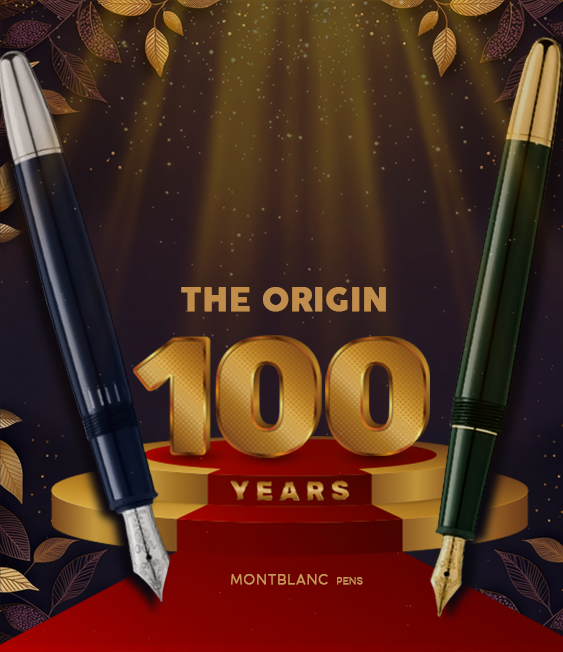
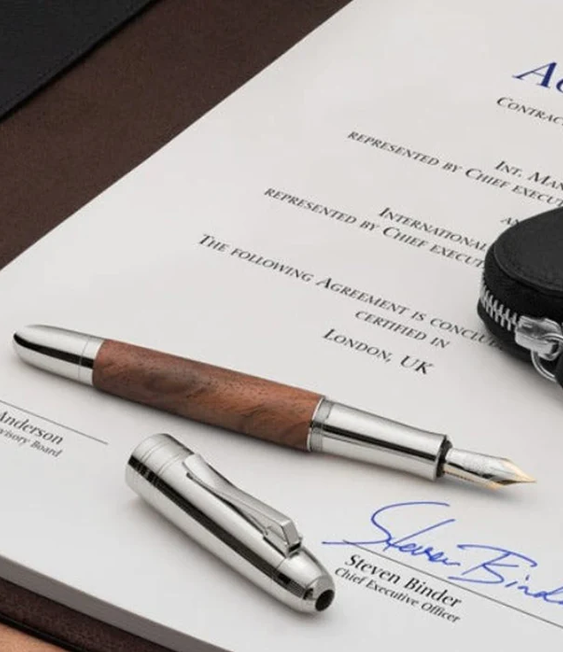
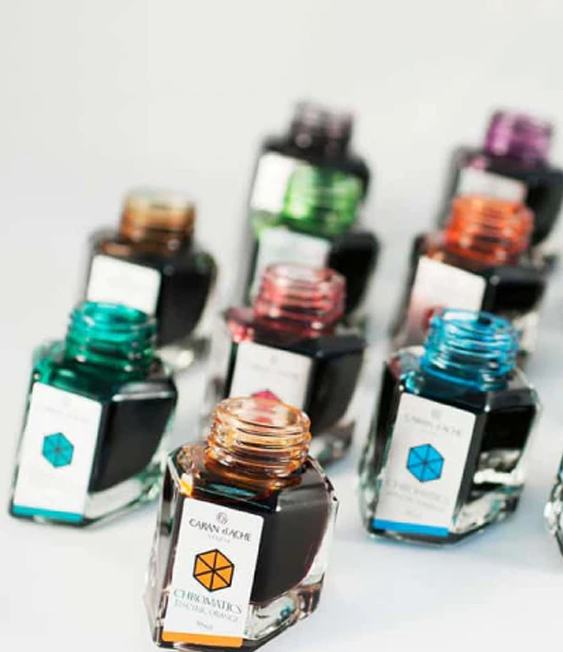
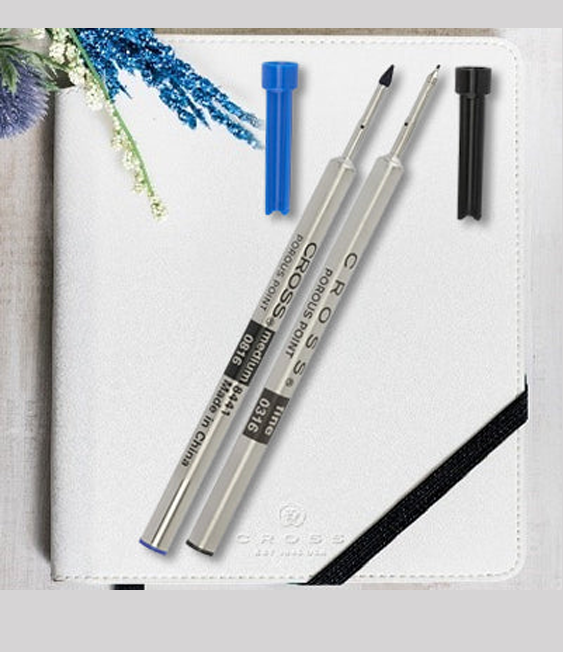




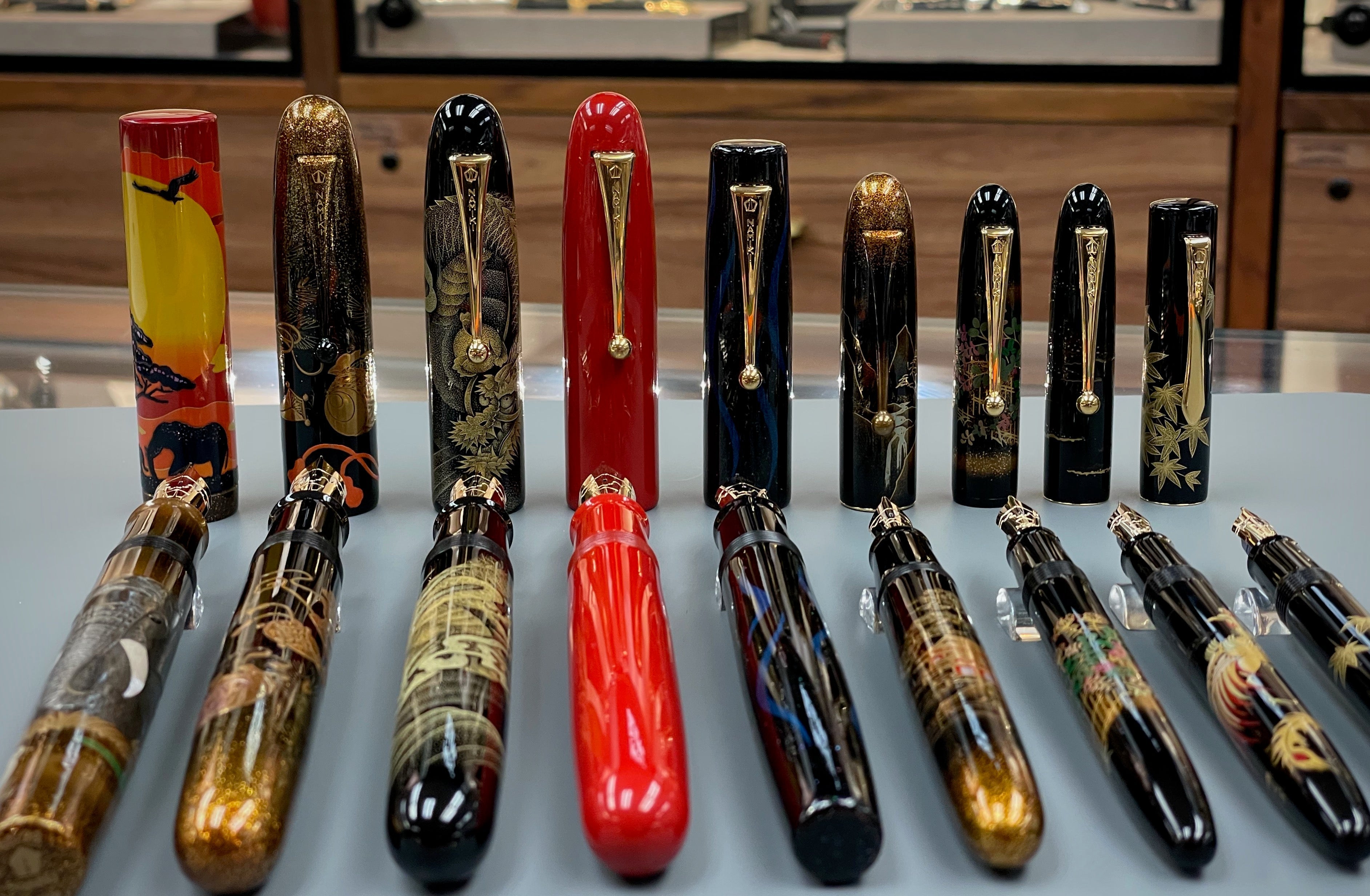
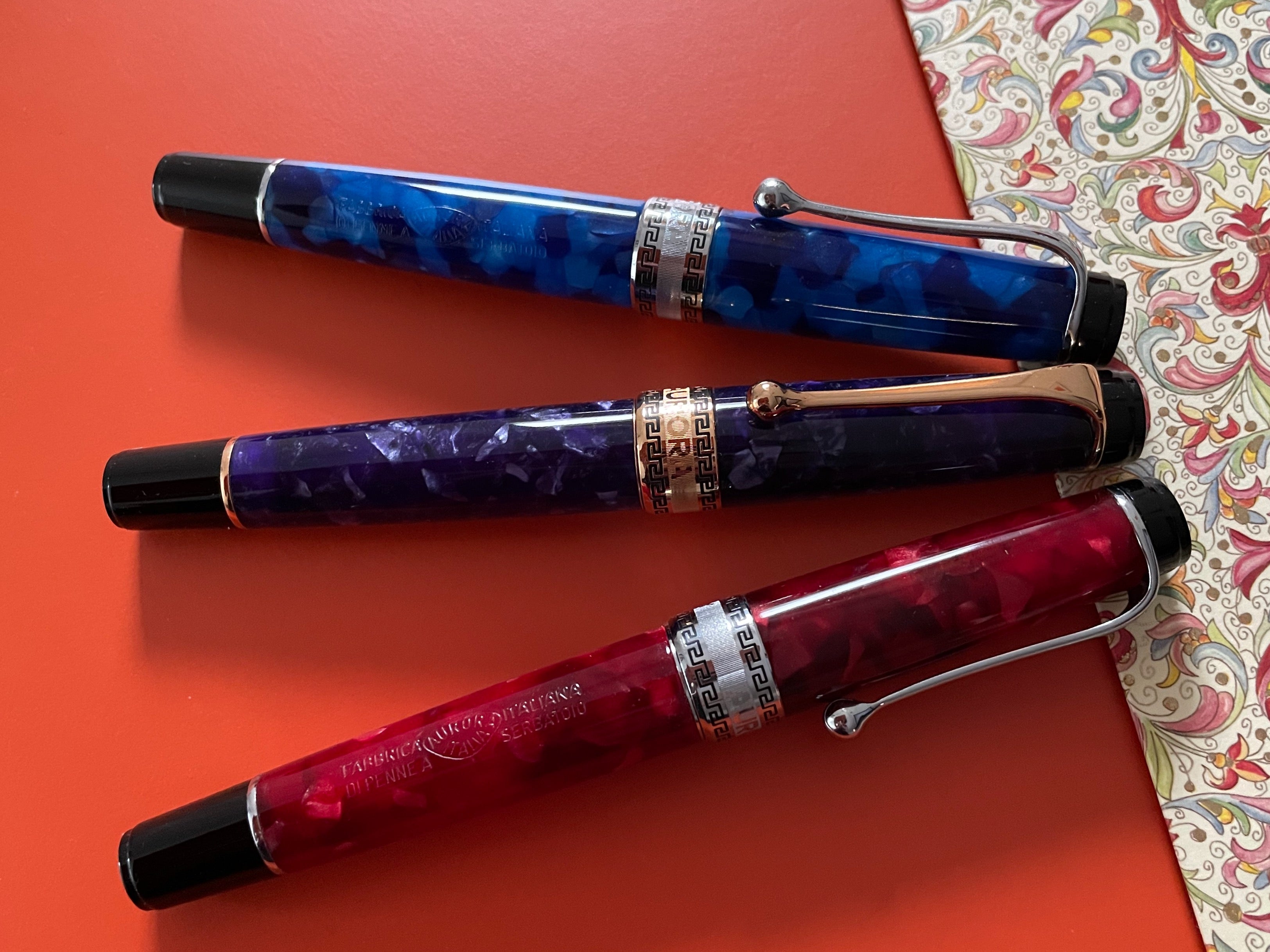

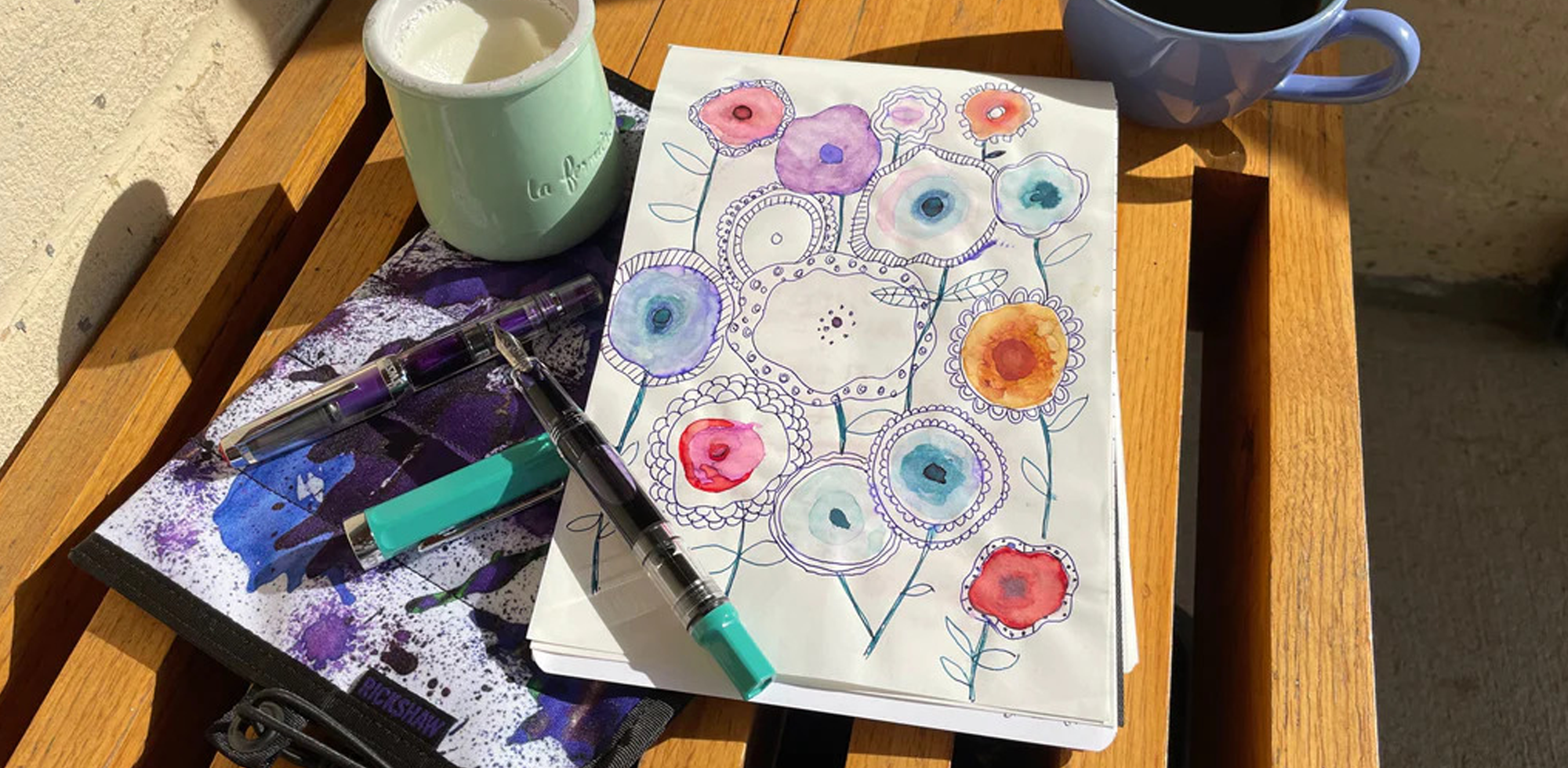
11 comments
James Watts
I have one old-school VP that I’ve had since the late 1980s as well as a newer “Blue Carbonesque” model that gets a lot of use. But it is a pen that needs to be used — the cartridges seem to dry up quickly if it sits idle for too long. Both have fine nibs.
I have one old-school VP that I’ve had since the late 1980s as well as a newer “Blue Carbonesque” model that gets a lot of use. But it is a pen that needs to be used — the cartridges seem to dry up quickly if it sits idle for too long. Both have fine nibs.
DL
Thank you for taking the time to write such a comprehensive review of the VP line. I’m a newbie on the FP scene, but have a decimo and a regular VP and love them both and use them daily. I’m excited to learn about the other models in the Pilot line up and will try and convince Santa that I’ve been good enough this year to warrant one of these under the tree.
Thank you for taking the time to write such a comprehensive review of the VP line. I’m a newbie on the FP scene, but have a decimo and a regular VP and love them both and use them daily. I’m excited to learn about the other models in the Pilot line up and will try and convince Santa that I’ve been good enough this year to warrant one of these under the tree.
Laura P. (blog author)
Hi Erik,
I’m sorry you had a disappointing experience with your old Vanishing Points! I spoke with Bill today about the material of the current lineup, and he says, “The current capless family available in the US market is all metal components, barrel and clips, with the exception of the VP SE with the resin barrels. The faceted barrels from a few decades ago were plastic barrels.” So, I think you’d be a lot happier with a modern Vanishing Point!
-Laura
Hi Erik,
I’m sorry you had a disappointing experience with your old Vanishing Points! I spoke with Bill today about the material of the current lineup, and he says, “The current capless family available in the US market is all metal components, barrel and clips, with the exception of the VP SE with the resin barrels. The faceted barrels from a few decades ago were plastic barrels.” So, I think you’d be a lot happier with a modern Vanishing Point!
-Laura
Teresa Colon
Laura, what an awesome review. I read it the first time and waited a while before getting the Vanishing Point LS in Burgundy. Love the color and I too found it strange on how the point comes out. I showed my husband and he was how do you hold it with the clip right there. I shared how I hold it and fit like a glove. I like a hefty writing instrument versus the light ones. I even got the similar ink. It is now one of my favorite writing instruments. Gorgeous! Please keep your blog going and share other insights!
Laura, what an awesome review. I read it the first time and waited a while before getting the Vanishing Point LS in Burgundy. Love the color and I too found it strange on how the point comes out. I showed my husband and he was how do you hold it with the clip right there. I shared how I hold it and fit like a glove. I like a hefty writing instrument versus the light ones. I even got the similar ink. It is now one of my favorite writing instruments. Gorgeous! Please keep your blog going and share other insights!
Michael V
Great post and a huge fan of the vanishing point line and have several as my daily pen. Recently purchased the stripes version and yes it was costly but every time I use it it gives me that feeling of the perfect mix of Japanese quality and value. I have gone through different Rhodium nibs and experiment with different inks and best to refill your own cartridges versus the one it comes with. Currently using a Mont Blanc Black Permanent ink and flows nicely as to heavy of the pigment style ones can create issues. Pick up one today!
Great post and a huge fan of the vanishing point line and have several as my daily pen. Recently purchased the stripes version and yes it was costly but every time I use it it gives me that feeling of the perfect mix of Japanese quality and value. I have gone through different Rhodium nibs and experiment with different inks and best to refill your own cartridges versus the one it comes with. Currently using a Mont Blanc Black Permanent ink and flows nicely as to heavy of the pigment style ones can create issues. Pick up one today!
Patrick O'Leary
As usual, a perfectly written review with intelligent observations. Not too mention the outstanding images. Thank you for the time and effort put into maintaining the blog.
As usual, a perfectly written review with intelligent observations. Not too mention the outstanding images. Thank you for the time and effort put into maintaining the blog.
Rich
Thanks for a great article on Pilot Vanishing Point pens. I don’t yet own one, but I’m now a little less weirded out by them. You addressed some important aspects that fountain pen users especially would be interested in—is there a concern over these pens drying out, and can you actually carry one around anxiety-free? Keep up the good work! 😄
Thanks for a great article on Pilot Vanishing Point pens. I don’t yet own one, but I’m now a little less weirded out by them. You addressed some important aspects that fountain pen users especially would be interested in—is there a concern over these pens drying out, and can you actually carry one around anxiety-free? Keep up the good work! 😄
Erik
With the exception of the Fermo, Pilot’s other vanishing point pens don’t hold up well over time. I had bought several “vanishing point” Pilots years ago, and found that the clip which appeared to be anchored on metal was only attached to metal painted plastic and that eventually broke. I bought 2 Fermos from Japan and those are “the real deal.” Fermos last for years and years. For me, at least, the other models are “no sale.” (All are great writers though)
With the exception of the Fermo, Pilot’s other vanishing point pens don’t hold up well over time. I had bought several “vanishing point” Pilots years ago, and found that the clip which appeared to be anchored on metal was only attached to metal painted plastic and that eventually broke. I bought 2 Fermos from Japan and those are “the real deal.” Fermos last for years and years. For me, at least, the other models are “no sale.” (All are great writers though)
Felix Hester
Thank you for such a detailed history and review!! I have always admired your he VP and have enjoyed using them over the years!
Thank you for such a detailed history and review!! I have always admired your he VP and have enjoyed using them over the years!
Thomas Pelikan
A big shout out to Namiki/Pilot support! I had an older smaller model in green and the case cracked. I sent it in hoping for a repair instead of a crazy glue Hail Mary.
But I was gifted with a brand new Decimo in light blue. They don’t have green in those smaller models. I am very pleased.
A big shout out to Namiki/Pilot support! I had an older smaller model in green and the case cracked. I sent it in hoping for a repair instead of a crazy glue Hail Mary.
But I was gifted with a brand new Decimo in light blue. They don’t have green in those smaller models. I am very pleased.
H. Gua
I’m so jealous of your special tour through capless-land with Bill Pearcy, especially the “seeable innards” pen. So far, I have a decimo in and I really like it. I’ve found the “standard” vanishing-point to be bigger and heavier than I like. I’d love to try the stub nib.
Also, fascinating bit about the snails and their “doors”. Love the pictures!
I’m so jealous of your special tour through capless-land with Bill Pearcy, especially the “seeable innards” pen. So far, I have a decimo in and I really like it. I’ve found the “standard” vanishing-point to be bigger and heavier than I like. I’d love to try the stub nib.
Also, fascinating bit about the snails and their “doors”. Love the pictures!